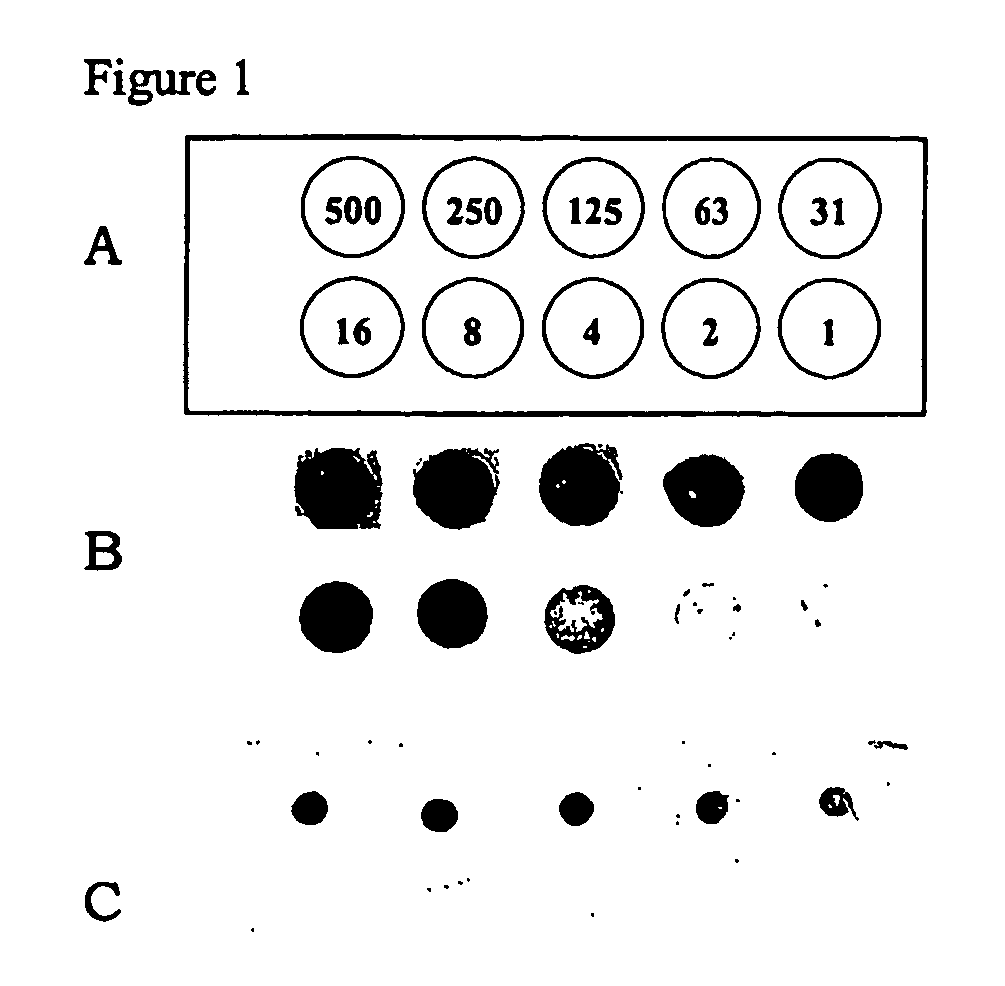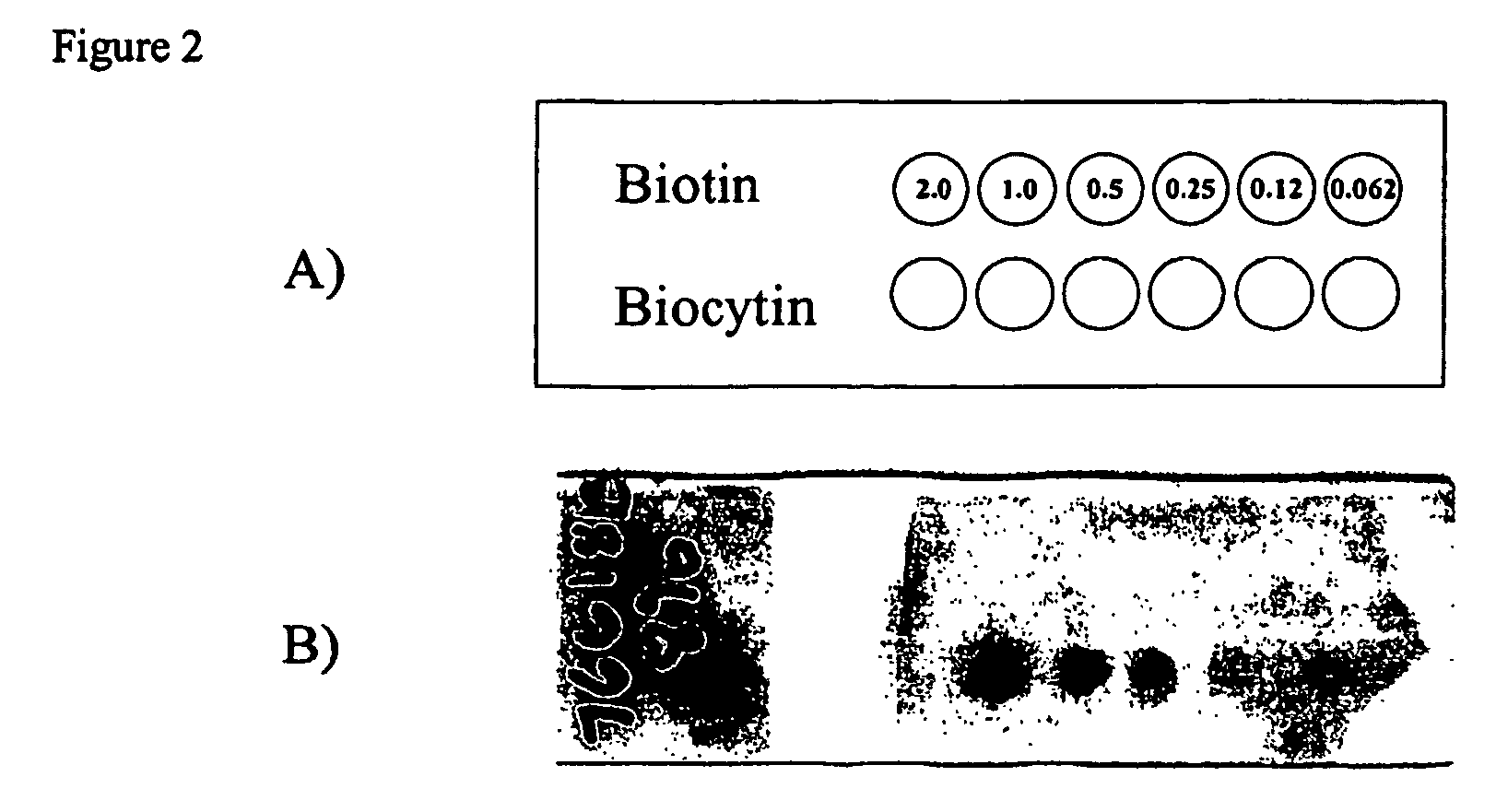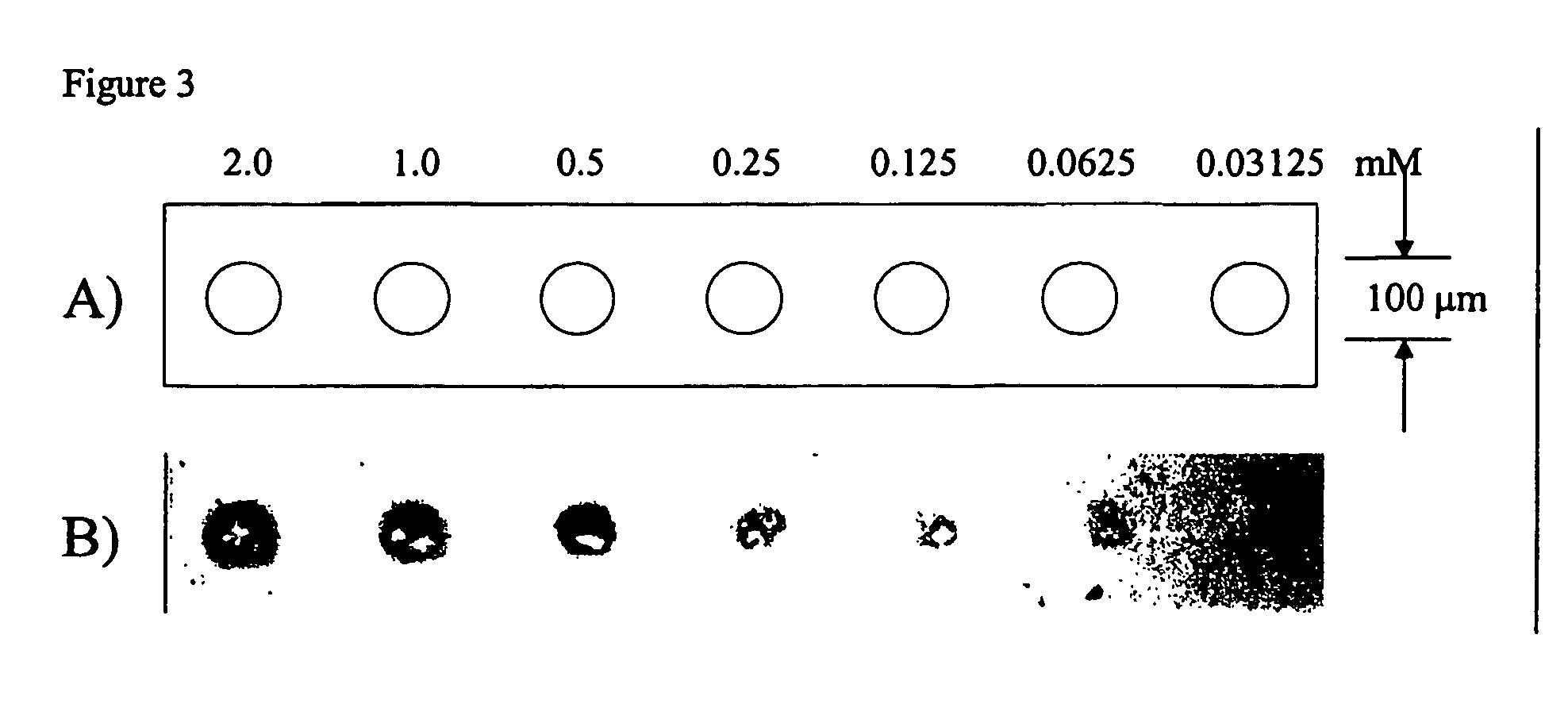Graft polymer martrices
a polymer martrice and graft technology, applied in the field of graft polymer martrices, can solve the problems of inability to achieve more than one layer of probes on the slide surface, adverse effects on protein interactions, and the concentration of the target concentration that limits the increase of the dynamic range of the microarray, so as to enhance the efficiency of probe and target binding efficiency, enhance the specificity of the functional utility, and ensure the effect of stability
- Summary
- Abstract
- Description
- Claims
- Application Information
AI Technical Summary
Benefits of technology
Problems solved by technology
Method used
Image
Examples
example 1
Preparation of a Graft Polymer Layer Containing Acrylamide, Aminopropylacrylamide, and PEG-Methacrylate with Initiator Incorporated into the Primer
Application of Primer
A solution of primer containing a radical initiator was prepared by mixing together a styrene-butadiene based adhesive (Eclectic Products, Springfield Oreg.), 4.8 g, tetrahydrofuran, 21.5 g, toluene, 21.5 g, and lauryl peroxide, 0.24 g. The concentration of lauryl peroxide was 10 percent by weight of solids. Five standard sized (25 mm×75 mm×1.1 mm) glass microscope slides that had been previously cleaned by washing with tetrahydrofuran were dipped approximately 5 cm into and removed from the initiator / primer solution and dried at room temperature overnight.
Application of Graft Polymer
A concentrated aqueous solution of sodium chloride was prepared by dissolving sodium chloride, 290 g, and poly(vinylpyrrolidone) (K90 grade, BASF), 4.0 g, in deionized water, 1710 g. A reactive monomer solution was prepared by nex...
example 2
Preparation of a Graft Polymer Layer Containing Acrylamide, Aminopropylmethacrylamide, and PEG-Methacrylate with a Two-Step Primer Coating and Initiator Application
Application of Primer
A solution of primer was prepared by mixing together a styrene-butadiene based adhesive (Eclectic Products, Springfield Oreg.), 4.9 g, tetrahydrofuran, 22 g, and toluene, 22 g. This solution was filtered through a nylon filter screen with a pore size of 75 μm. Five standard sized (25 mm×75 mm×1.1 mm) glass microscope slides that had been previously cleaned by washing with tetrahydroftiran were dipped approximately 5 cm into and removed from the solution of primer and dried at 60° C. under dynamic vacuum. A solution of radical initiator was prepared by dissolving lauryl peroxide, 0.20 g, in acetone, 49 g. Each of the primer coated slides was subsequently dipped approximately 5 cm into and removed from the solution of initiator and allowed to dry at room temperature overnight.
Application of Graft ...
example 3
Reaction of an N-Hydroxysuccinimide Probe with an Amine-Containing Graft Polymer Modified Surface (Colorimetric Analysis)
Serial dilutions of N-hydroxysuccinimide-modified biotin (NHS-biotin, Pierce) were prepared by dissolving the appropriate amount of NHS-biotin in PBS. In all, ten solutions were prepared, one each having a concentration of NHS-biotin of 500, 250, 125, 63, 31, 16, 8, 4, 2, and 1 μg / ml.
A slide from Example 1, containing side-chain amine active groups was spotted in distinct areas with 1 μl of each NHS-biotin solution following the pattern described in FIG. 1a. The slide was incubated for 30 minutes in a humidity chamber at room temperature and washed in PBS solution for 5 minutes. The slide was immersed in a solution of streptavidin-alkaline phosphatase (25 μg / ml, Pierce) for 30 minutes at room temperature. The slide was developed with NBT / BCIP precipitating substrate (Pierce) for 15 minutes followed by washing with deionized water. The slide was imaged on an Ol...
PUM
| Property | Measurement | Unit |
|---|---|---|
| diameter | aaaaa | aaaaa |
| diameter | aaaaa | aaaaa |
| thick | aaaaa | aaaaa |
Abstract
Description
Claims
Application Information
 Login to View More
Login to View More - R&D
- Intellectual Property
- Life Sciences
- Materials
- Tech Scout
- Unparalleled Data Quality
- Higher Quality Content
- 60% Fewer Hallucinations
Browse by: Latest US Patents, China's latest patents, Technical Efficacy Thesaurus, Application Domain, Technology Topic, Popular Technical Reports.
© 2025 PatSnap. All rights reserved.Legal|Privacy policy|Modern Slavery Act Transparency Statement|Sitemap|About US| Contact US: help@patsnap.com



